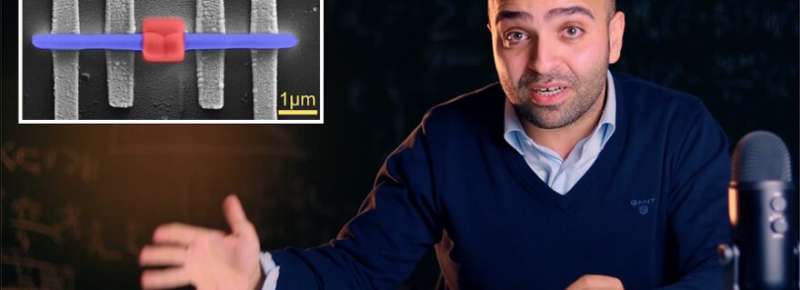Physicists invent printable superconducting device

Superconducting devices such as SQUIDS (Superconducting Quantum Interferometry Device) can perform ultra-sensitive measurements of magnetic fields. Leiden physicsts invented a method to 3-D-print these and other superconducting devices in minutes.
"Fabricating superconducting devices on a computer chip is a multi-step and demanding procedure, requiring dedicated facilities," says Kaveh Lahabi, a physicist at Leiden Universty. "It usually takes days to complete,"
Lahabi and co-authors have developed a new approach, in which Josephson junctions, essential parts of SQUIDS, can be printed on almost any surface in mere minutes, within an electron microscope.
In this video, Lahabi and co-author Tycho Blom demonstrate their technique and discuss their recent article in ACS Nano.
More information: Tycho J. Blom et al. Direct-Write Printing of Josephson Junctions in a Scanning Electron Microscope, ACS Nano (2020). DOI: 10.1021/acsnano.0c03656
Journal information: ACS Nano
Provided by Leiden Institute of Physics




















